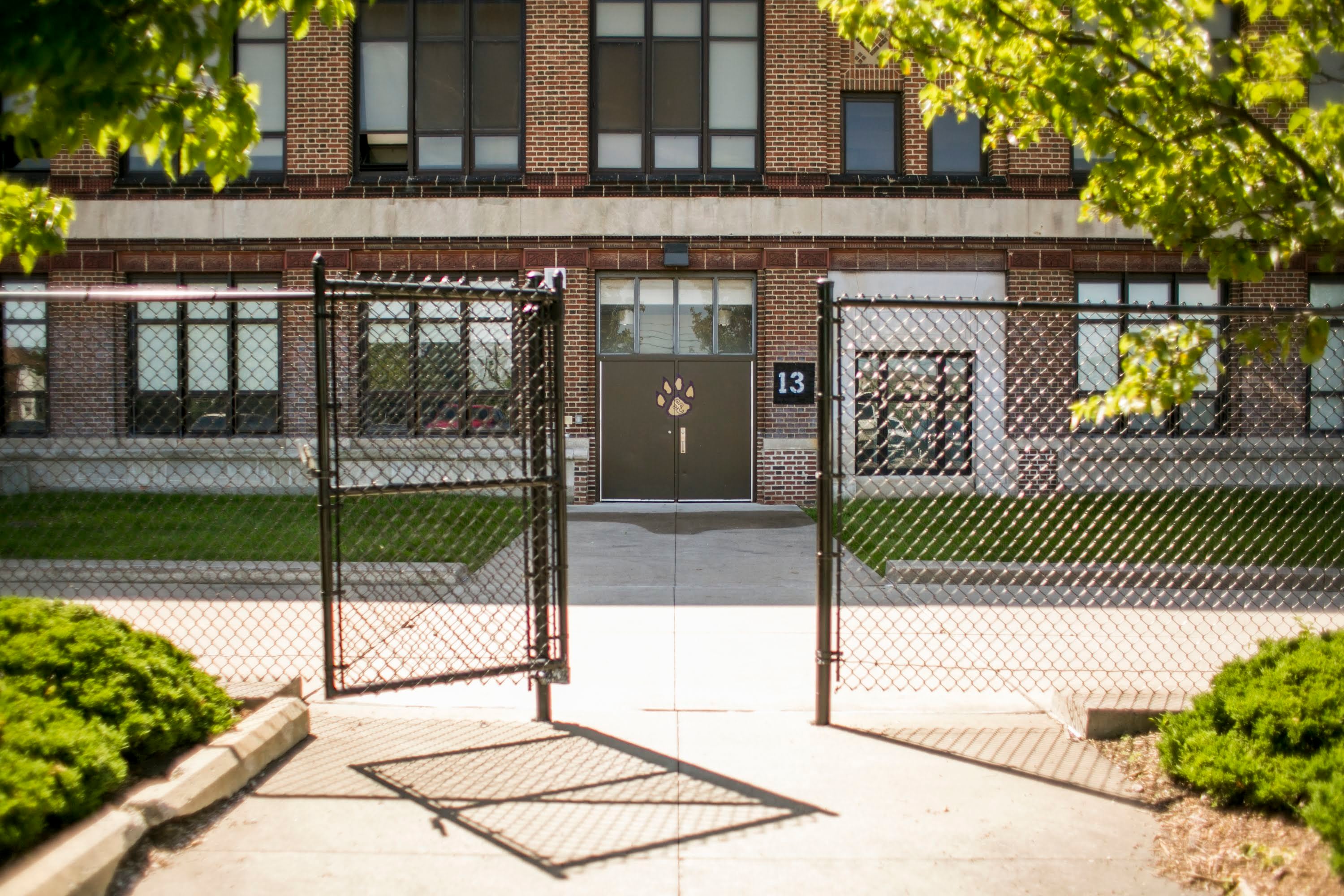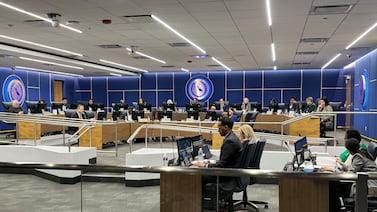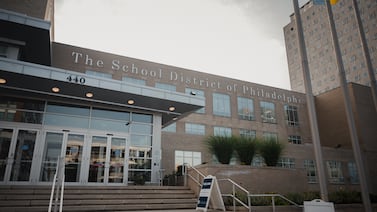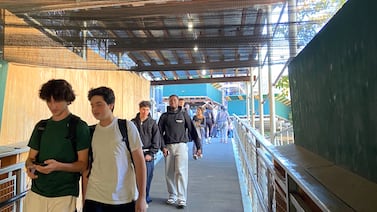In Chicago, when coal-fired power plants closed, students in nearby schools were absent less often.
In Rhode Island, children exposed to lead were more likely to be suspended and had lower test scores.
And nationwide, researchers have found that students in schools without air conditioning learn less in years with more hot school days.
Similar research has been piling up in recent years, showing a direct connection between the environment students are learning in and their academic success. A Chalkbeat review found over a dozen studies in the last several years making the case.
Sometimes the links are obvious; other times, they’re surprising. But together, the studies suggest that upgrades to school facilities might not just result in cosmetic improvements, but could benefit student learning — at a moment when schools may be considering changes that were previously out of reach thanks to federal stimulus funds. If President Biden’s proposed infrastructure package becomes reality, schools would get billions more.
“This will be one of the biggest opportunities we’ve had in my two decades of public health work,” said Nsedu Obot Witherspoon, the executive director of the Children’s Environmental Health Network.
There is still plenty of uncertainty about exactly how big a role schools can play in addressing some of these problems. That’s particularly true for issues like lead poisoning, where much of children’s exposure is likely happening outside of schools. The choices schools make matter too, of course, since facilities funding could be used to improve air quality or for other things, like beefing up security.
What we do know from research is a child’s surroundings — both in and outside of schools — affects their health and cognitive function.
A big factor is air quality. Studies have found that children who attend school near a source of pollution have worse test scores, attendance rates, or both. This link has been shown for coal-fired power plants in Chicago and North Carolina and highways and toxic chemical sites in Florida. Other research has found diesel-fueled school buses in Georgia lower students’ test scores.
Moreover, research suggests students learn less, and attend class less regularly, when in poorly ventilated classrooms.
The impact of these air quality issues is fairly small, but the results are consistent and apply to millions of students, and particularly low-income students of color. The Chicago study, for instance, showed that being near a coal plant reduced every student’s attendance by nearly a full day each school year, likely because of increased rates of health issues like asthma. One recent federal report found that the most common school facilities problem was faulty heating, ventilation, and air conditioning systems.
“There’s a great amount of research out there [on] outdoor air pollutants and indoor air pollutants,” said Witherspoon. “At the end of the day, they’re both not good.”
Then there’s lead exposure, which has long been shown to be extremely dangerous for children, hurting their IQ and impulse control. Research in Rhode Island has shown that even low levels of lead exposure can cause declines in students’ test scores and increase their likelihood of being suspended.
Lead poisoning can also disrupt the functioning of an entire school or classroom. A recent North Carolina paper found that test scores went down and suspensions went up among students who had more classmates with elevated lead levels.
“Even quite low levels of lead still matter,” Janet Currie, a Princeton University professor who conducted the Rhode Island studies.
A 2018 federal report found that over a third of schools that tested for it found elevated levels of lead in their drinking water. (Many schools didn’t regularly test.)
There is also the issue of stiflingly hot classrooms. A national study found that students score worse on the PSAT in the fall if their schools lacked air conditioning and it was particularly hot the year before. Approximately 40% of test takers attended schools without functioning A/C, and the rates were higher among schools serving more low-income students and more students of color.
Another study found New York City students did worse when taking a high-stakes graduation test on a hot day, making them less likely to earn a high school diploma.
“Kids are just going to be really uncomfortable a lot of the time and that’s also been shown to affect their schooling performance,” said Currie. “We expect kids to function in environments that often adults would not put up with.”
Some parents have been fighting for better facilities for years. Laura Stewart, a parent in the Montgomery County, Mayland schools, says she got interested in school facilities issues when her daughter’s school built portable classrooms because of overcrowding.
Since then, she’s advocated for broader changes, including better ventilation and water filtering systems, across the large district, which has several hundred million of dollars in deferred maintenance. Those funding gaps leave schools fighting for a slice of the pie, and she worries that more affluent schools can be better positioned to advocate for themselves.
“Communities come in with their matching T-shirts, they show videos, they have signs. ‘Please do something about my building.’ You have to literally fight for dollars,” said Stewart. “This is why it’s so important that this federal bill comes through — it’s our chance to catch up.”
Biden’s infrastructure plan, proposed last month, would direct $100 billion to upgrade and build school facilities. It’s light on details, but the plan mentions that funding will “first go toward making sure our schools are safe and healthy places of learning ... for example by improving indoor air quality and ventilation.”
Will it help?
In Los Angeles, test scores rose after schools installed air filters, one recent study found. The PSAT researchers found, unsurprisingly, that the negative effects of heat essentially vanished in schools with air conditioning.
Research on facilities spending generally has been more mixed. A recent overview paper found that such spending does tend to improve test scores, although it takes several years for those gains to show up.
But another recent study found no evidence that spending more on buildings improved students’ test scores or graduation rates. That could be because schools spent the money on things that have value but aren’t likely to lead to academic benefits, like security upgrades or sports facilities.
If Biden’s infrastructure bill passes, which is far from guaranteed, the question becomes exactly how schools will use the new funds.
“I think it’s long overdue,” said Currie. “I just hope they seize the opportunity to use the money wisely.”






